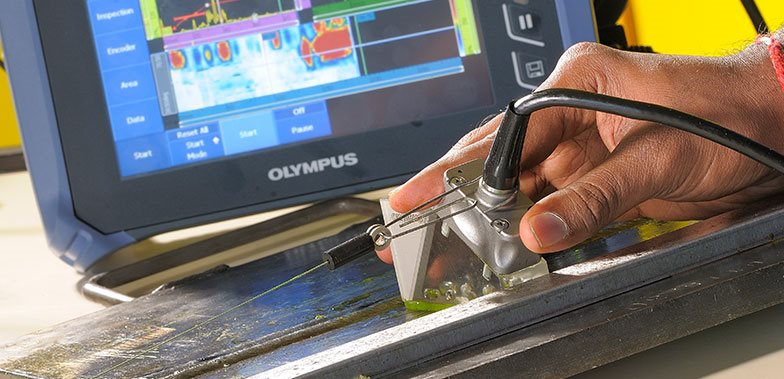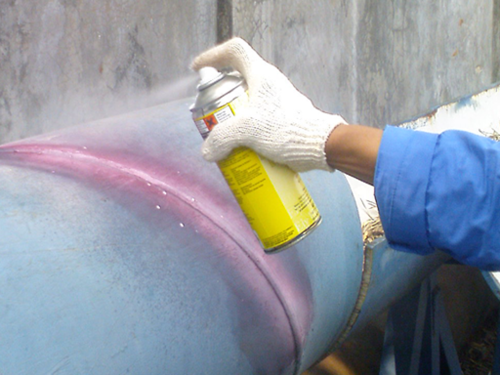Table of Content
Regarding NDT methods, it is a crucial procedure that supports a wide category of industries that maintain the world as we know it and operate at the highest capacity. From renewable energy to infrastructure, non-destructive testing is crucial to keeping a safe and sound environment. In most industries, welding is utilised to develop, join, and repair several objects.
NDT Techniques can be particular to the substance's elements, locations, and accessibility. Some common NDT methods for welding include Ultrasonic Testing, Liquid Penetrant Testing, and Magnetic Particle Testing. These methods help ensure the quality and integrity of welds, ultimately contributing to the safety and reliability of structures and equipment.
NDT Testing Methods for Welding
NDT methods for welding include ultrasonic testing, radiographic testing, magnetic particle testing, and liquid penetrant testing. These methods are used to detect defects in welds such as cracks, porosity, and lack of fusion. Each method has its own advantages and limitations, making it important to choose the right technique based on the specific requirements of the welding project. The most popular non-destructive choices for welding are mentioned below:
1. Ultrasonic Testing
Most NDT Technicians agree on the fact that the best NDT testing method when it comes to welding is none other than ultrasonic testing. Ultrasonic Testing is the procedure through which high-frequency sound waves are induced into the object in order to identify flaws. By utilizing a sending unit & an Ultrasonic Transducer, sound waves continue to travel within the material that is under examination, and any shortcomings will be automatically demonstrated on the indication screen.
Ultrasonic Testing is known as the most accurate and precise technique of non-destructive testing. It can quickly and accurately determine shortcomings in welds without the help of labor-intensive set-up and with straightforward equipment. An the method known as phased array pertains to using several transducers to scan a wide area of a weld, which increases the technique's efficiency.
2. Liquid Penetrant Testing
Liquid Penetrant Testing is generally utilised as an NDT Testing Method for all kinds of tasks and substances, specifically for welded substances. LPT is capillary activities that identify shortcomings or discontinuities by utilizing a low-viscosity liquid splashed over the material's surface. The characteristics of capillary activities result in the penetrant getting into any voids or fissures that might be present on the surface of the object.
When all the excess penetrant is eliminated by the inspector, the flaws or deformities will be revealed. This method functions accurately for welding because the Liquid Penetrant Testing easily helps identify the flaws. However, a secure weld will not enable the penetrant to get in. If any liquid penetrant flows through the weld, deformities can be identified, and the inspector will get to learn about the flaw immediately.
3. Magnetic Particle Testing
The third most used NDT Method for welding is magnetic particle testing. It is another widespread non-destructive testing technique. Like liquid penetrant testing, Magnetic Particle Testing includes applying iron particles to the object's surface. Magnetic particle testing uses a fine, pigmented ferromagnetic powder on the material's surface.
As the magnetic particle testing must be conducted on ferromagnetic substances, and when the magnetic field has pertained to the object under examination, the ferromagnetic powder will be drawn toward any deformities or discontinuities by developing a visible indication. These specific testing methods are quite effective for welding because carbon steel welds are ferromagnetic in nature; hence, they can be examined effectively using Magnetic Particle Testing.
Understanding Common Welding Defects
Welding is a precise craft that demands skill and attention to detail. To achieve flawless welds, it's crucial to be aware of and address common Welding Defects. These defects can compromise the integrity and strength of the weld, leading to potential safety hazards. By understanding how to identify and rectify these issues, welders can ensure the quality and durability of their work.
1. Incomplete Penetration
Incomplete penetration occurs when the weld fails to traverse the entire thickness of the joined parts, leaving portions of the original and Basic Welding Joints unwelded. To create a robust connection, welders must ensure that the weld fully penetrates the material.
2. Lack of Fusion-Bridging the Gap
Lack of Fusion in Welds presents itself when the weld fails to penetrate the base metal or other weld passes adequately. Overcoming this defect involves refining welding techniques to guarantee a seamless fusion between the materials.
3. Undercut
Undercut arises when the welding process gouges out the base metal without adequately filling it back in. To remedy this, welders should pay meticulous attention to the Welding Process, ensuring that gaps are properly filled to prevent undercuts.
4. Slag Inclusions
Slag inclusions occur when a preceding weld pass hasn't been thoroughly cleaned, and the next pass lacks the heat needed to eliminate any residual slag. A spotless welding canvas is essential to prevent slag inclusions, emphasising the importance of cleaning between passes.
5. Porosity
Porosity manifests as small holes in the weld due to subpar welding techniques or conditions. Perfecting the weld involves refining techniques and creating optimal conditions to eliminate porosity issues.
6. Burn-Through
Burn-through happens when the second pass, applied over the initial one, generates enough heat to partially or completely melt through the first pass. Precision in passes is key to avoiding burn-through and ensuring a flawless weld.
7. Underfill
Underfill occurs when the final pass falls below the base metal or when the weld is thinner than the base metal. Meeting specifications and maintaining consistency are crucial to overcoming underfill challenges.
8. Overlap
Overlap arises when the filler material extends over the edge of the previous weld bead. Achieving seamlessness involves careful control of filler material to prevent overlap and ensure a clean, uniform appearance.
9. Cracks
Cracks can occur in the base metal, weld metal, or both, often due to stress in the weld joint or lack of pre-heat in the base metal during welding. Strengthening the foundation involves addressing stress factors and implementing proper Preheating Welding Techniques.
Also Read, Friction Stir Welding of Steel for Pipeline Fabrication
Key Takeaways
- When it comes to Welding, it is the most significant part of areas like infrastructure, manufacturing, and many other utilities around the globe.
- It is important that NDT technicians are well aware of the best ways to work with welded substances.
- If you are someone who is looking to become an NDT technician through NDT Training and Courses or hire NDT services to preserve your materials, it is extremely important to select the right company to fulfill your NDT requirements, specifically if you have welded substances that require servicing!
- OnestopNDT is a platform that can help you with NDT Courses, knowledgeable technicians, and hands-on coursework to teach all aspiring technicians about NDT Certification.
References:
1. TUV
2. Quality Magazine
3. NDT Group
4. Olympus











